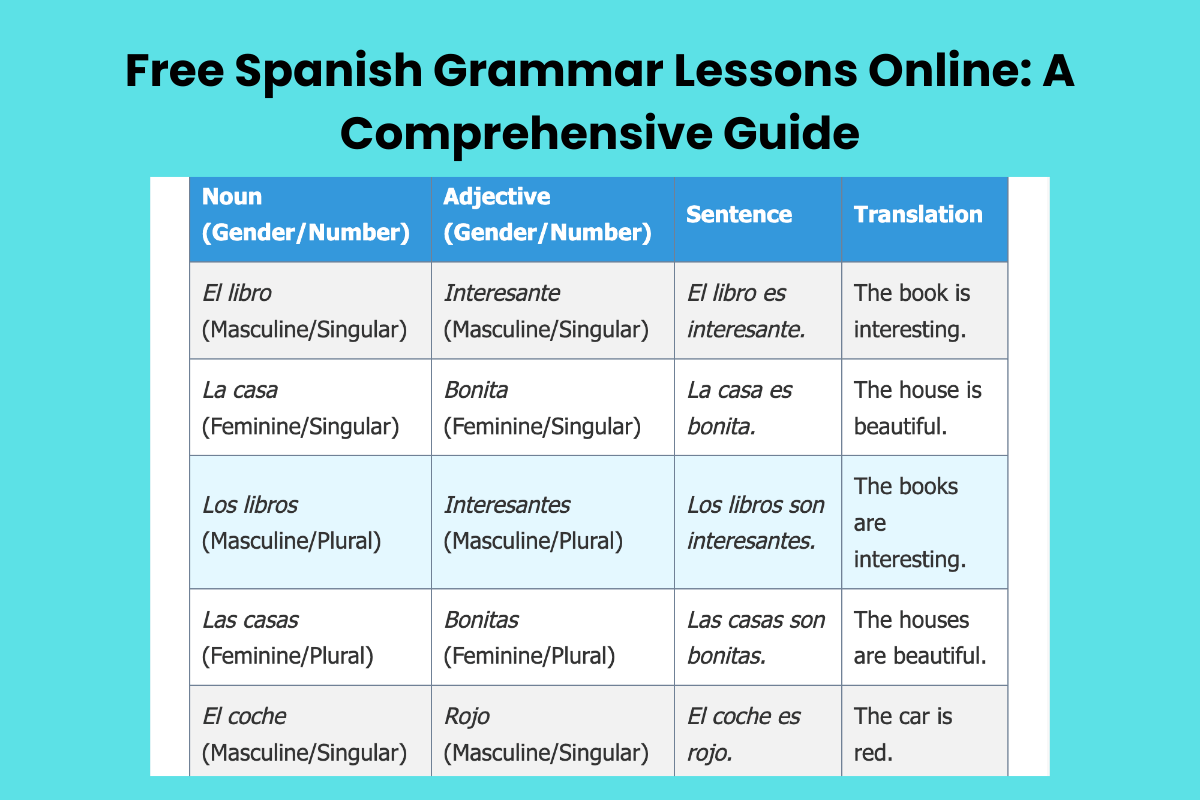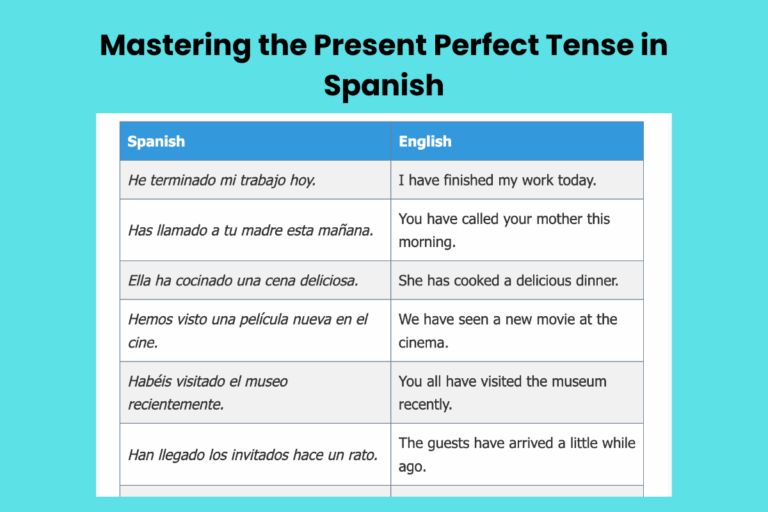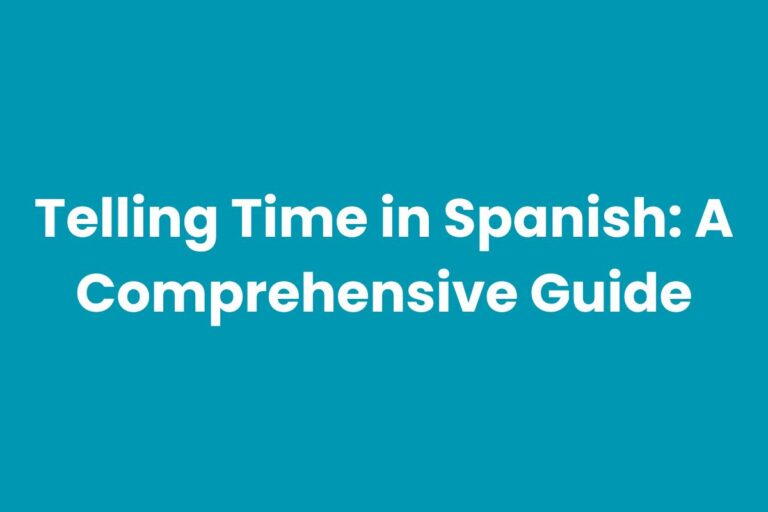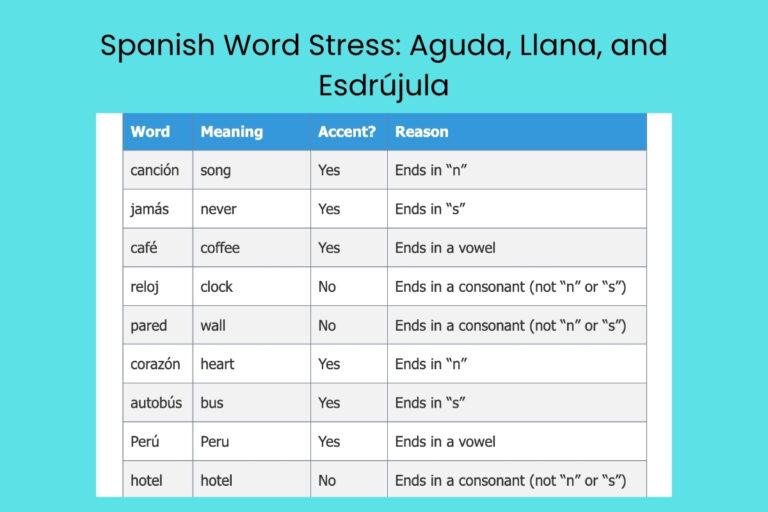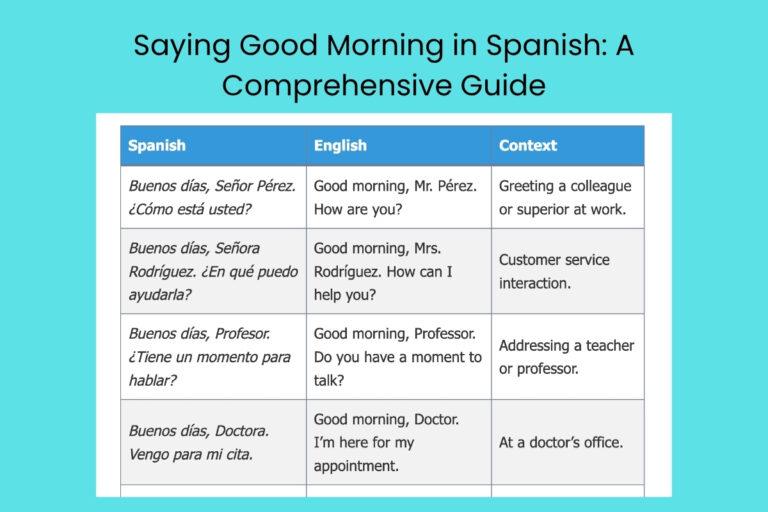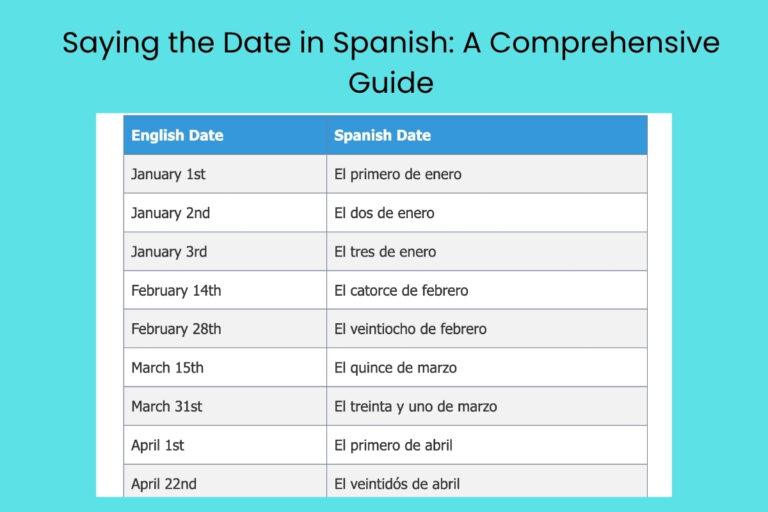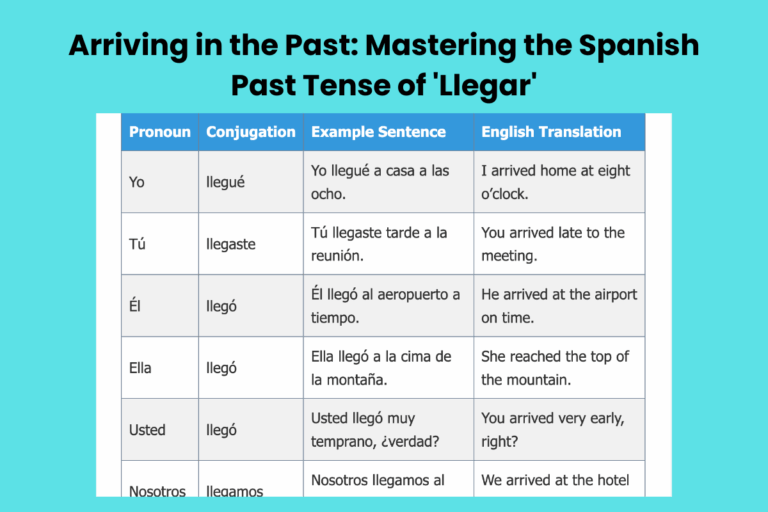Free Spanish Grammar Lessons Online: A Comprehensive Guide
Embarking on the journey of learning Spanish can be both exciting and challenging. Grammar forms the backbone of any language, and Spanish is no exception.
Understanding Spanish grammar is crucial for constructing coherent sentences, expressing your thoughts accurately, and truly communicating with native speakers. Whether you are a beginner just starting to explore the language or an intermediate learner aiming to refine your skills, this comprehensive guide to free online Spanish grammar lessons will provide you with the resources and knowledge you need to succeed.
This article is designed for students, travelers, professionals, and anyone with a passion for the Spanish language.
Table of Contents
- Introduction
- Definition of Spanish Grammar
- Structural Breakdown of Spanish Grammar
- Key Categories in Spanish Grammar
- Examples of Spanish Grammar in Use
- Usage Rules in Spanish Grammar
- Common Mistakes in Spanish Grammar
- Practice Exercises
- Advanced Topics in Spanish Grammar
- Frequently Asked Questions (FAQ)
- Conclusion
Definition of Spanish Grammar
Spanish grammar, like any language’s grammar, comprises the rules and principles that govern the structure of sentences, phrases, and words. It dictates how words are combined to form meaningful expressions and how these expressions are used in communication.
Understanding Spanish grammar involves mastering elements such as verb conjugations, noun genders, adjective agreement, and sentence structure. Grammatical accuracy is essential for clear and effective communication in Spanish, ensuring that your message is understood as intended.
Spanish grammar is often categorized into morphology and syntax. Morphology deals with the internal structure of words, including how they are formed and modified (e.g., verb conjugations, noun plurals).
Syntax, on the other hand, focuses on how words are arranged to form phrases and sentences, including word order and the relationships between different parts of a sentence. Both morphology and syntax are crucial for mastering Spanish grammar.
Structural Breakdown of Spanish Grammar
The structure of Spanish grammar can be broken down into several key components. These components work together to create coherent and grammatically correct sentences.
Understanding these elements is fundamental to mastering the language.
The basic sentence structure in Spanish typically follows a Subject-Verb-Object (SVO) order, although variations are common, especially when using pronouns. Unlike English, Spanish allows for more flexibility in word order due to its rich verb conjugations, which often indicate the subject of the sentence.
For example, the sentence “Yo como manzanas” (I eat apples) can also be expressed as “Manzanas como” (Apples, I eat), although the latter is less common and may emphasize the object.
Verb conjugations are a crucial aspect of Spanish grammar. Spanish verbs change their form depending on the tense, mood, and person (who is performing the action).
There are three main verb conjugations in Spanish, based on the infinitive ending: -ar, -er, and -ir. Each verb conjugation has its own set of rules for how it changes in different tenses.
For example, the verb “hablar” (to speak) conjugates differently from the verb “comer” (to eat) or “vivir” (to live).
Nouns in Spanish are either masculine or feminine, and this gender affects the articles (e.g., el, la) and adjectives that modify them. Adjectives must agree in gender and number with the nouns they describe. For example, if you are describing a masculine singular noun, the adjective must also be masculine and singular. If you are describing a feminine plural noun, the adjective must be feminine and plural.
Key Categories in Spanish Grammar
Spanish grammar consists of several categories of words, each with its own function and rules. These categories include nouns, pronouns, adjectives, verbs, adverbs, prepositions, conjunctions, and interjections.
Understanding these categories is essential for building a solid foundation in Spanish grammar.
Spanish Nouns (Sustantivos)
Nouns in Spanish are words that represent people, places, things, or ideas. Every noun in Spanish has a gender (masculine or feminine) and a number (singular or plural). The gender of a noun is often indicated by its ending, although there are exceptions. For example, nouns ending in -o are usually masculine (e.g., libro – book), and nouns ending in -a are usually feminine (e.g., casa – house). To form the plural of most nouns, add -s if the noun ends in a vowel and -es if it ends in a consonant.
Spanish Pronouns (Pronombres)
Pronouns are words that replace nouns. Spanish has several types of pronouns, including personal pronouns (e.g., yo – I, tú – you, él/ella – he/she), possessive pronouns (e.g., mío/mía – mine, tuyo/tuya – yours), demonstrative pronouns (e.g., este/esta – this, ese/esa – that), and relative pronouns (e.g., que – that, which, who). Pronouns are used to avoid repetition and to make sentences more concise.
Spanish Adjectives (Adjetivos)
Adjectives are words that describe nouns. In Spanish, adjectives usually follow the noun they modify, and they must agree in gender and number with the noun.
For example, if you are describing a masculine singular noun, the adjective must also be masculine and singular. Common adjective endings include -o (masculine singular), -a (feminine singular), -os (masculine plural), and -as (feminine plural).
Spanish Verbs (Verbos)
Verbs are words that express actions, states, or occurrences. Spanish verbs are conjugated, meaning they change their form depending on the tense, mood, and person.
There are three main verb conjugations in Spanish, based on the infinitive ending: -ar, -er, and -ir. Each verb conjugation has its own set of rules for how it changes in different tenses.
Mastering verb conjugations is crucial for speaking and writing accurately in Spanish.
Spanish Adverbs (Adverbios)
Adverbs are words that modify verbs, adjectives, or other adverbs. They provide information about how, when, where, or to what extent something is done. Many Spanish adverbs are formed by adding -mente to the feminine singular form of an adjective (e.g., rápido – quick, rápidamente – quickly). Other common adverbs include muy (very), siempre (always), and nunca (never).
Spanish Prepositions (Preposiciones)
Prepositions are words that connect nouns or pronouns to other words in a sentence, indicating relationships such as location, direction, time, or manner. Common Spanish prepositions include a (to), de (of, from), en (in, on), por (for, by), and para (for, to). Understanding prepositions is essential for constructing grammatically correct and meaningful sentences.
Spanish Conjunctions (Conjunciones)
Conjunctions are words that connect words, phrases, or clauses. Spanish has two main types of conjunctions: coordinating conjunctions and subordinating conjunctions. Coordinating conjunctions (e.g., y – and, o – or, pero – but) connect elements of equal grammatical rank. Subordinating conjunctions (e.g., que – that, si – if, porque – because) connect a subordinate clause to a main clause.
Spanish Interjections (Interjecciones)
Interjections are words or phrases that express sudden emotions or reactions. They are often used to add emphasis or emotion to a sentence. Common Spanish interjections include ¡Hola! (Hello!), ¡Adiós! (Goodbye!), ¡Ay! (Oh!), and ¡Ojalá! (I hope!).
Examples of Spanish Grammar in Use
To illustrate the concepts discussed above, here are several examples of Spanish grammar in use. These examples cover various categories and demonstrate how the rules of Spanish grammar are applied in real-world contexts.
The following tables provide examples of noun-adjective agreement, verb conjugations, and the use of prepositions in Spanish sentences. Each table includes a variety of examples to help you understand the different ways these grammatical elements can be used.
Noun-Adjective Agreement
This table demonstrates how adjectives must agree in gender and number with the nouns they modify.
| Noun (Gender/Number) | Adjective (Gender/Number) | Sentence | Translation |
|---|---|---|---|
| El libro (Masculine/Singular) | Interesante (Masculine/Singular) | El libro es interesante. | The book is interesting. |
| La casa (Feminine/Singular) | Bonita (Feminine/Singular) | La casa es bonita. | The house is beautiful. |
| Los libros (Masculine/Plural) | Interesantes (Masculine/Plural) | Los libros son interesantes. | The books are interesting. |
| Las casas (Feminine/Plural) | Bonitas (Feminine/Plural) | Las casas son bonitas. | The houses are beautiful. |
| El coche (Masculine/Singular) | Rojo (Masculine/Singular) | El coche es rojo. | The car is red. |
| La mesa (Feminine/Singular) | Grande (Feminine/Singular) | La mesa es grande. | The table is big. |
| Los coches (Masculine/Plural) | Rojos (Masculine/Plural) | Los coches son rojos. | The cars are red. |
| Las mesas (Feminine/Plural) | Grandes (Feminine/Plural) | Las mesas son grandes. | The tables are big. |
| El perro (Masculine/Singular) | Pequeño (Masculine/Singular) | El perro es pequeño. | The dog is small. |
| La flor (Feminine/Singular) | Amarilla (Feminine/Singular) | La flor es amarilla. | The flower is yellow. |
| Los perros (Masculine/Plural) | Pequeños (Masculine/Plural) | Los perros son pequeños. | The dogs are small. |
| Las flores (Feminine/Plural) | Amarillas (Feminine/Plural) | Las flores son amarillas. | The flowers are yellow. |
| El hombre (Masculine/Singular) | Alto (Masculine/Singular) | El hombre es alto. | The man is tall. |
| La mujer (Feminine/Singular) | Inteligente (Feminine/Singular) | La mujer es inteligente. | The woman is intelligent. |
| Los hombres (Masculine/Plural) | Altos (Masculine/Plural) | Los hombres son altos. | The men are tall. |
| Las mujeres (Feminine/Plural) | Inteligentes (Feminine/Plural) | Las mujeres son inteligentes. | The women are intelligent. |
| El sol (Masculine/Singular) | Brillante (Masculine/Singular) | El sol es brillante. | The sun is bright. |
| La luna (Feminine/Singular) | Llena (Feminine/Singular) | La luna está llena. | The moon is full. |
| Los soles (Masculine/Plural) | Brillantes (Masculine/Plural) | Los soles son brillantes. | The suns are bright. |
| Las lunas (Feminine/Plural) | Llenas (Feminine/Plural) | Las lunas están llenas. | The moons are full. |
Verb Conjugations (Present Tense)
This table illustrates the conjugation of the verbs hablar (to speak), comer (to eat), and vivir (to live) in the present tense.
| Pronoun | Hablar (to speak) | Comer (to eat) | Vivir (to live) |
|---|---|---|---|
| Yo (I) | Hablo | Como | Vivo |
| Tú (You, informal) | Hablas | Comes | Vives |
| Él/Ella/Usted (He/She/You, formal) | Habla | Come | Vive |
| Nosotros/Nosotras (We) | Hablamos | Comemos | Vivimos |
| Vosotros/Vosotras (You, informal plural) | Habláis | Coméis | Vivís |
| Ellos/Ellas/Ustedes (They/You, formal plural) | Hablan | Comen | Viven |
| Yo (I) | Hablo español | Como pizza | Vivo en Madrid |
| Tú (You, informal) | Hablas inglés | Comes fruta | Vives en Londres |
| Él/Ella/Usted (He/She/You, formal) | Habla francés | Come carne | Vive en París |
| Nosotros/Nosotras (We) | Hablamos alemán | Comemos pasta | Vivimos en Roma |
| Vosotros/Vosotras (You, informal plural) | Habláis ruso | Coméis pescado | Vivís en Berlín |
| Ellos/Ellas/Ustedes (They/You, formal plural) | Hablan chino | Comen arroz | Viven en Tokio |
| Yo (I) | Hablo con mi amigo | Como en el restaurante | Vivo con mi familia |
| Tú (You, informal) | Hablas por teléfono | Comes en la calle | Vives solo/a |
| Él/Ella/Usted (He/She/You, formal) | Habla en la reunión | Come en casa | Vive en un apartamento |
| Nosotros/Nosotras (We) | Hablamos en la clase | Comemos juntos/as | Vivimos en la ciudad |
| Vosotros/Vosotras (You, informal plural) | Habláis en voz baja | Coméis rápido | Vivís en el campo |
| Ellos/Ellas/Ustedes (They/You, formal plural) | Hablan con entusiasmo | Comen despacio | Viven en el extranjero |
Use of Prepositions
This table provides examples of how prepositions are used to indicate relationships between words in a sentence.
| Preposition | Example Sentence | Translation |
|---|---|---|
| A (to) | Voy a la tienda. | I am going to the store. |
| De (of, from) | Soy de España. | I am from Spain. |
| En (in, on) | Estoy en la casa. | I am in the house. |
| Por (for, by) | Lo hago por ti. | I do it for you. |
| Para (for, to) | Este regalo es para ti. | This gift is for you. |
| Con (with) | Voy con mi amigo. | I am going with my friend. |
| Sin (without) | Estoy sin dinero. | I am without money. |
| Sobre (on, about) | El libro está sobre la mesa. | The book is on the table. |
| Durante (during) | Estudié durante la noche. | I studied during the night. |
| Contra (against) | Luchamos contra el enemigo. | We fought against the enemy. |
| Desde (from, since) | Vivo aquí desde 2010. | I have lived here since 2010. |
| Entre (between, among) | La casa está entre los árboles. | The house is between the trees. |
| Hacia (towards) | Caminamos hacia la playa. | We walked towards the beach. |
| Hasta (until) | Trabajo hasta las seis. | I work until six o’clock. |
| Según (according to) | Según el periódico, va a llover. | According to the newspaper, it’s going to rain. |
| Tras (after) | Tras la lluvia, salió el sol. | After the rain, the sun came out. |
| Ante (before, in front of) | Compareció ante el juez. | He appeared before the judge. |
| Bajo (under) | El gato está bajo la mesa. | The cat is under the table. |
| Cabe (near) | La casa está cabe el río. | The house is near the river. |
| Para (by) | Estará listo para mañana. | It will be ready by tomorrow. |
Usage Rules in Spanish Grammar
Spanish grammar has several usage rules that govern how words are combined to form meaningful sentences. These rules cover aspects such as word order, verb conjugations, noun-adjective agreement, and the use of prepositions and conjunctions.
Understanding these rules is essential for speaking and writing accurately in Spanish.
One important rule in Spanish grammar is the agreement between nouns and adjectives. Adjectives must agree in gender and number with the nouns they modify.
This means that if a noun is masculine and singular, the adjective must also be masculine and singular. Similarly, if a noun is feminine and plural, the adjective must also be feminine and plural.
This agreement is crucial for ensuring that sentences are grammatically correct and understandable.
Another important rule is the conjugation of verbs. Spanish verbs change their form depending on the tense, mood, and person.
Each verb conjugation (-ar, -er, -ir) has its own set of rules for how it changes in different tenses. Mastering verb conjugations is crucial for expressing actions and events accurately in Spanish.
The use of prepositions is also governed by specific rules. Each preposition has its own meaning and is used in specific contexts. For example, the preposition a is often used to indicate direction or destination, while the preposition de is used to indicate origin or possession. Understanding the nuances of each preposition is essential for constructing grammatically correct and meaningful sentences.
Common Mistakes in Spanish Grammar
Even experienced learners of Spanish often make common mistakes in grammar. Being aware of these mistakes and understanding how to avoid them can significantly improve your fluency and accuracy.
Here are some of the most common mistakes made by Spanish learners:
- Incorrect noun-adjective agreement: Forgetting to match the gender and number of adjectives with the nouns they modify.
- Misuse of verb tenses: Using the wrong verb tense to express an action or event.
- Incorrect use of prepositions: Using the wrong preposition to indicate a relationship between words in a sentence.
- Confusing ser and estar: Using the wrong verb to express states of being or characteristics.
- Incorrect word order: Placing words in the wrong order in a sentence.
Here are some examples of common mistakes with corrections:
| Incorrect | Correct | Explanation |
|---|---|---|
| El libro es interesante. (The book is interesting – adjective not agreeing) | El libro es interesante. | The adjective “interesante” is already in a form that agrees with masculine singular nouns. |
| Yo tengo hambre. (I have hunger – incorrect expression) | Tengo hambre. | The verb “tener” is not needed. “Tengo hambre” is the standard way to say “I am hungry.” |
| Estoy cansado. (I am tired – incorrect verb) | Estoy cansado. | “Estar” is used for temporary states (like being tired). |
| Voy a la playa a nadar. (I go to the beach to swim – incorrect preposition) | Voy a la playa para nadar. | “Para” is used to express purpose. |
| Me gusta la libro. (I like the book – incorrect article) | Me gusta el libro. | “Libro” is masculine, so it requires the masculine article “el.” |
| Hablo español muy bueno. | Hablo español muy bien. | “Bueno” is an adjective, while “bien” is an adverb. You need an adverb to modify the verb “hablo.” |
| Yo quiero que tú vas. | Yo quiero que tú vayas. | After “querer que,” the verb in the subordinate clause needs to be in the subjunctive mood. |
| Es muy caliente hoy. | Hace mucho calor hoy. | To talk about weather, use “hacer” with “calor” (heat). |
| Dónde está? | ¿Dónde está? | Questions in Spanish need an inverted question mark at the beginning. |
| No comprendo nada. | No comprendo nada. | Double negatives are common and grammatically correct in Spanish. |
Practice Exercises
To reinforce your understanding of Spanish grammar, here are several practice exercises. These exercises cover various topics, including noun-adjective agreement, verb conjugations, and the use of prepositions.
Complete these exercises to test your knowledge and identify areas where you may need further practice.
Exercise 1: Noun-Adjective Agreement
Fill in the blanks with the correct form of the adjective in parentheses.
| Sentence | Adjective (infinitive) | Correct Form |
|---|---|---|
| El libro es __________. | Interesante | |
| La casa es __________. | Bonito | |
| Los perros son __________. | Pequeño | |
| Las flores son __________. | Amarillo | |
| El hombre es __________. | Alto | |
| La mujer es __________. | Inteligente | |
| Los coches son __________. | Rojo | |
| Las mesas son __________. | Grande | |
| El sol es __________. | Brillante | |
| Las lunas son __________. | Lleno |
Exercise 2: Verb Conjugations (Present Tense)
Conjugate the verb in parentheses in the present tense.
| Sentence | Verb (infinitive) | Correct Form |
|---|---|---|
| Yo __________ español. | Hablar | |
| Tú __________ pizza. | Comer | |
| Él __________ en Madrid. | Vivir | |
| Nosotros __________ inglés. | Hablar | |
| Vosotros __________ fruta. | Comer | |
| Ellos __________ en París. | Vivir | |
| Yo __________ con mi amigo. | Hablar | |
| Tú __________ en el restaurante. | Comer | |
| Él __________ con mi familia. | Vivir | |
| Nosotros __________ por teléfono. | Hablar |
Exercise 3: Use of Prepositions
Fill in the blanks with the correct preposition.
| Sentence | Correct Preposition |
|---|---|
| Voy __________ la tienda. | |
| Soy __________ España. | |
| Estoy __________ la casa. | |
| Lo hago __________ ti. | |
| Este regalo es __________ ti. | |
| Voy __________ mi amigo. | |
| Estoy __________ dinero. | |
| El libro está __________ la mesa. | |
| Estudié __________ la noche. | |
| Luchamos __________ el enemigo. |
Advanced Topics in Spanish Grammar
For advanced learners of Spanish, there are several more complex grammatical topics to explore. These topics include the subjunctive mood, conditional sentences, and the use of impersonal expressions.
Mastering these advanced topics will allow you to express yourself with greater nuance and precision in Spanish.
The subjunctive mood is used to express doubt, uncertainty, wishes, emotions, and possibilities. It is often used in subordinate clauses that are introduced by conjunctions such as que (that), si (if), and para que (so that). The subjunctive mood has its own set of verb conjugations, which differ from those of the indicative mood.
Conditional sentences express hypothetical situations and their consequences. They typically consist of two clauses: an “if” clause (protasis) and a main clause (apodosis).
The tense used in each clause depends on the degree of possibility or certainty. For example, a possible condition is expressed using the present subjunctive in the “if” clause and the future indicative in the main clause.
An impossible condition is expressed using the pluperfect subjunctive in the “if” clause and the conditional perfect in the main clause.
Impersonal expressions are phrases that do not refer to a specific person or subject. They often use the verb ser (to be) followed by an adjective or noun. Examples of impersonal expressions include es
bueno que… (it is good that…), es importante que… (it is important that…), and es necesario que… (it is necessary that…). These expressions are often followed by a clause in the subjunctive mood.
Frequently Asked Questions (FAQ)
Conclusion
Mastering Spanish grammar is essential for anyone who wants to speak, write, and understand the language fluently. By understanding the key categories, usage rules, and common mistakes, you can build a solid foundation in Spanish grammar and improve your communication skills.
Take advantage of the free online resources available to you, practice regularly, and don’t be afraid to make mistakes. With dedication and perseverance, you can achieve your goals in learning Spanish.

